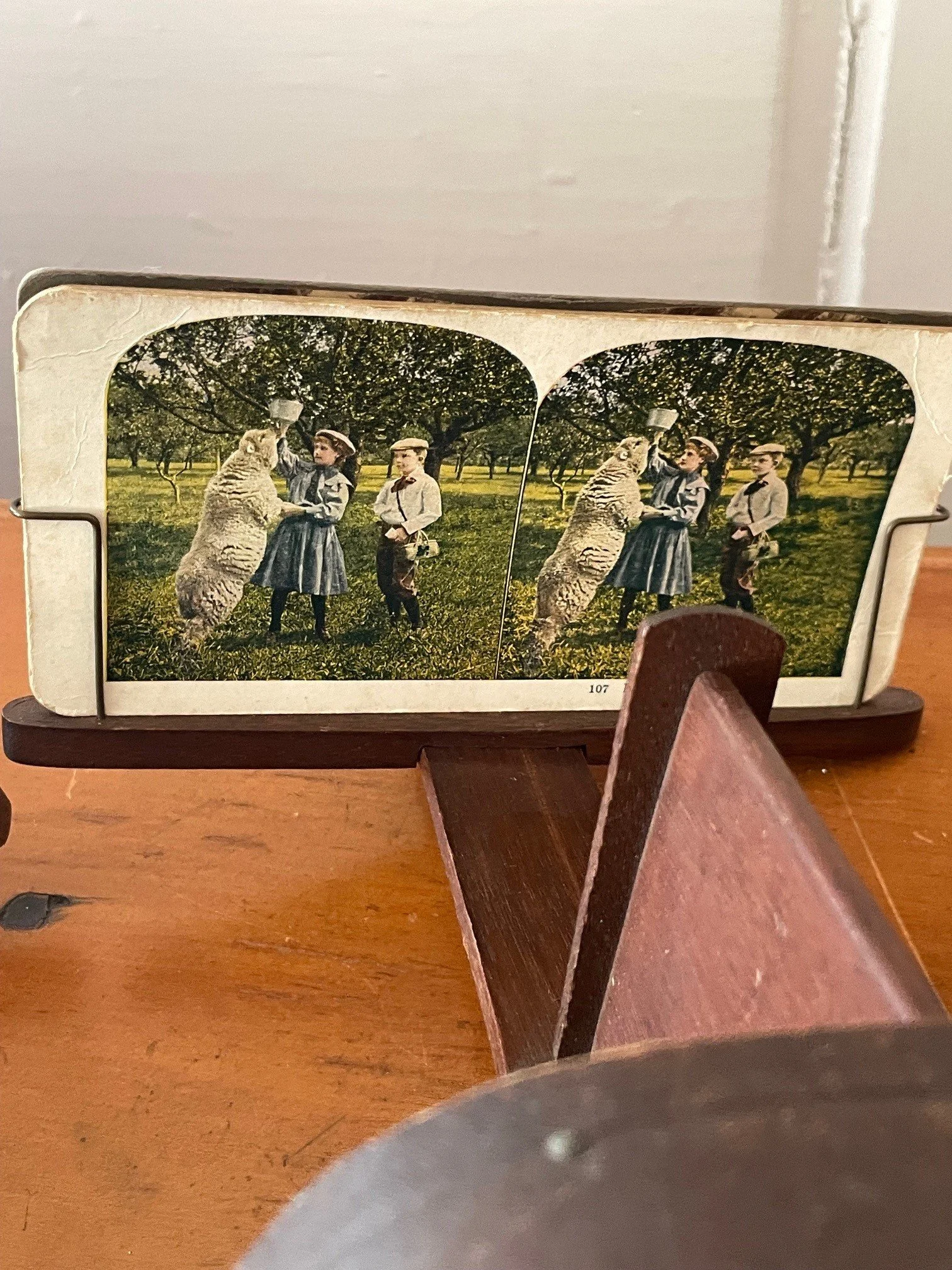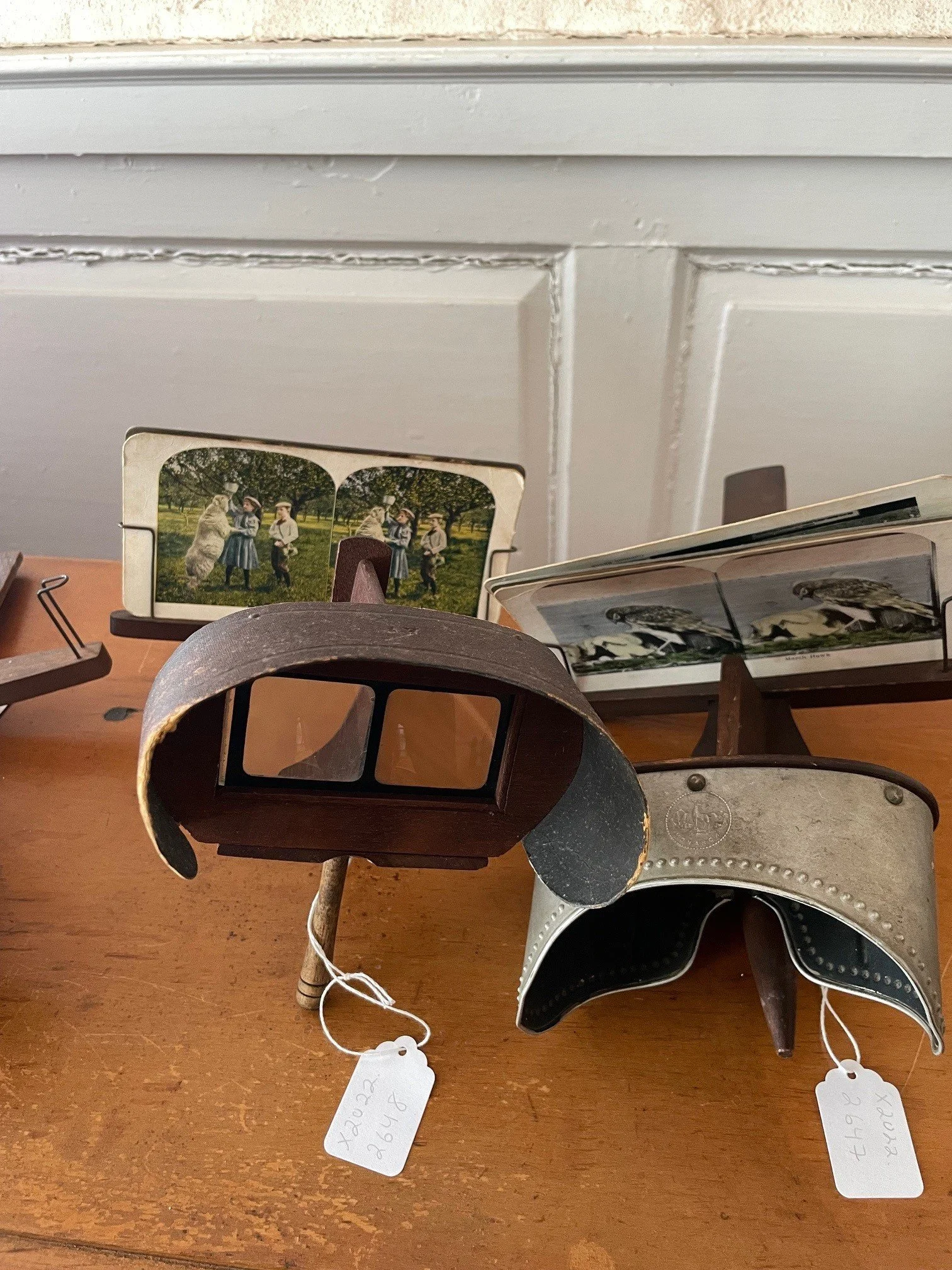Stereoscopes
Even before the beginning of photography, stereoscopic pictures have been made in an attempt to mimic binocular vision and produce a 3-dimensional effect. These are late 19th and early 20th century views, mostly of ordinary life or natural areas. The photographs were made using a camera with two lenses, placed horizontally, duplicating eyesight. (The earliest stereoscopes used drawings.) Hundreds of millions of stereoscopic pictures were made, well into the 21st century.
Stereoscopic pictures work because each human eye sees something from a slightly different angle; the two images are fused into one by the brain. Stereo cameras, using two separate lenses, record slightly different angles of the same scene, and when viewed together they create the 3-D effect.
The handheld devices shown on this webpage were parlor items in the mid-to-late 19th century.
Many households had collections of stereo photographs, and viewing them was popular entertainment. Scenes of foreign lands were especially prevalent.
In the mid-20th century, the inexpensive View-Master stereoscope was introduced. It involved color transparencies on a rotating cardboard wheel. By operating a lever, the wheel rotated, allowing the viewer to change scenes easily. At first featuring tourist attractions, the View-Master reels soon included cartoon characters and scenes from TV shows.
A similar principle is used in creating today’s virtual reality devices.


